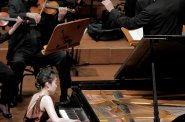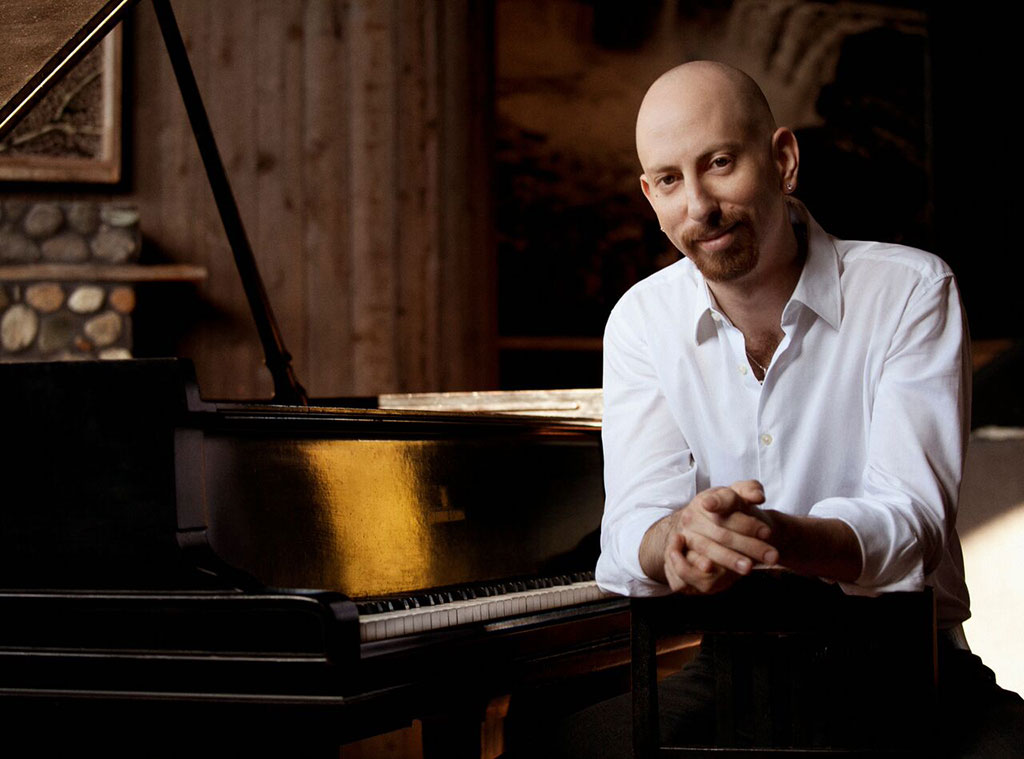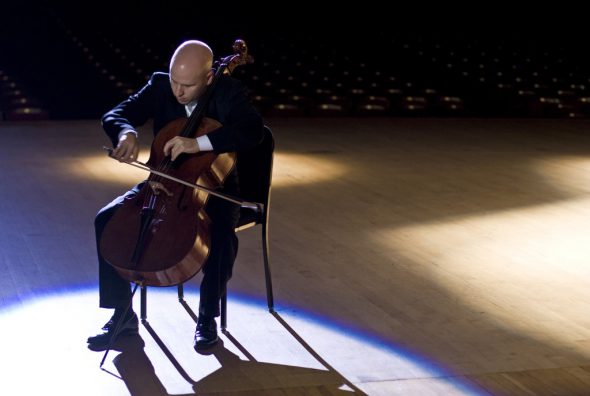Almond Joined by Two Terrific Guests
Pianist Adam Neiman, cellist Robert deMaine join Frank Almond.
Frankly Music ends its season on Monday evening with an intimate concert of chamber music featuring Artistic Director and violinist Frank Almond and two distinguished friends – cellist Robert deMaine and pianist Adam Neiman. Each have appeared with Frankly Music before. Three duos by Janáček and Martinū will explore every permutation of the three players and a trio by Dvořák will cap the evening.
Each of the guests lead extraordinarily busy lives on the international stage. Pianist Neiman‘s extensive career as a performer encompasses a repertoire of more than 60 concerti, substantial recordings of chamber music and international solo recital tours. He has composed many works including a symphony, piano concerto and string quartet. He and Almond both teach at Chicago’s Roosevelt University. Neiman will spend the summer as the new Artistic Director of the Vermont’s Manchester Music Festival.
DeMaine serves as Principal Cello for the Los Angeles Philharmonic. His performance career is also extensive. For many years, he played with the Ehnes Quartet and also appears with Dicterow-deMaine-Biegel Piano Trio. Also a composer, he has written several works for cello.
The evening’s focus on Czech music seems to highlight both a cheerful and introspective side of folk traditions of Bohemia and Moldavia.
An Czech expatriate for most of his life, Bohuslav Martinū wrote music that retains elements of Czech folk music, influences from Debussy, Albert Roussel and Stravinsky and a unique personal style in his many compositions. Composed a year before his death, his Duo No. 2 for violin and cello in D major, H. 371 (1958) contains lyrical melodies suggestive of Stravinksy’s neo-classical works. Critic James Leonard observes: “Like all of Martinu’s music, the Duo is essentially lyrical with long, gorgeous melodies that defy gravity as well as the bar line and, like most of Martinu’s music, the Duo has lightly sprung rhythms in its outer movements that draw as much on Renaissance materialists as on modernist composers. But in its central Adagio, Martinu’s melodies seem particularly poignant and his harmonies seem especially affecting, almost as if even the resolutely sanguine Martinu was musically acknowledging his own mortality.”
Leoš Janáček’s Fairy Tale (Pohádka) for cello and piano (1910 – revised 1923) draws inspiration from a Russian story – “The Tale of Tsar Berendyey.” The cello represents the young prince Berendyey, who falls in love with the daughter of the King of the Underworld, Maria. The piano represents Maria. NPR writer Tom Huizenga summarizes the work: “The action inspires some of Janáček’s most visceral music: lyrical love duets, prickly chase scenes and a soaring high B in the cello, depicting the prince’s recovery from a magic spell.”
Janáček’s Sonata for violin and piano (1914 – revised 1922) contrasts sharply with his Fairy Tale. Deeply affected by World War I, his sonata alternates between violent outbursts and Moravian folk themes. Program notes by Maximilian Hornung & Benjamin Engeli trace the emotional contours of the piece:
Almond considers the work to be “powerful and piercing music.”
Antonin Dvořák‘s Piano Trio in E Minor, Op. 90, “Dumky” (1891) departs from many of the structures common to chamber music. Rather than developing themes in sonata fashion, the work features six dumky episodes over six movements. The dumky form emerged from Slavic ballads – songs of lament. The classical form involves a brooding, introspective composition with cheerful sections interspersed within. Critic Daniel Felsenfeld observes, “Being completely free of the rigors of sonata form gave Dvořák license to take the movements to some dizzying, heavy, places, able to be both brooding and yet somehow, through it all, a little lighthearted.”
Indeed, in the spirit of the dumky, each of the works on the concert offer a mix of emotions – an ideal way to listen to great musicians interpret their art.
The Frankly Music concert begins at 7:00 p.m., Monday, May 15 at Schwan Concert Hall at Wisconsin Lutheran College, 8815 W. Wisconsin Ave., Wauwautosa. Tickets ($35 reserved seating – $10 for students) may be purchased online or at the door. Free parking is available in a parking garage to the east of the hall.
Preview
-
PianoArts Festival Features Rising Stars
 May 28th, 2024 by Michael Barndt
May 28th, 2024 by Michael Barndt
-
Four Nations Ensemble Goes For Baroque
 May 13th, 2024 by Michael Barndt
May 13th, 2024 by Michael Barndt
-
Mozart on Prospect Avenue
 May 9th, 2024 by Martha Brown
May 9th, 2024 by Martha Brown






















